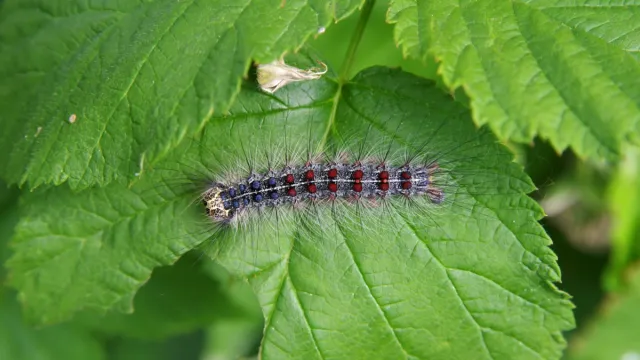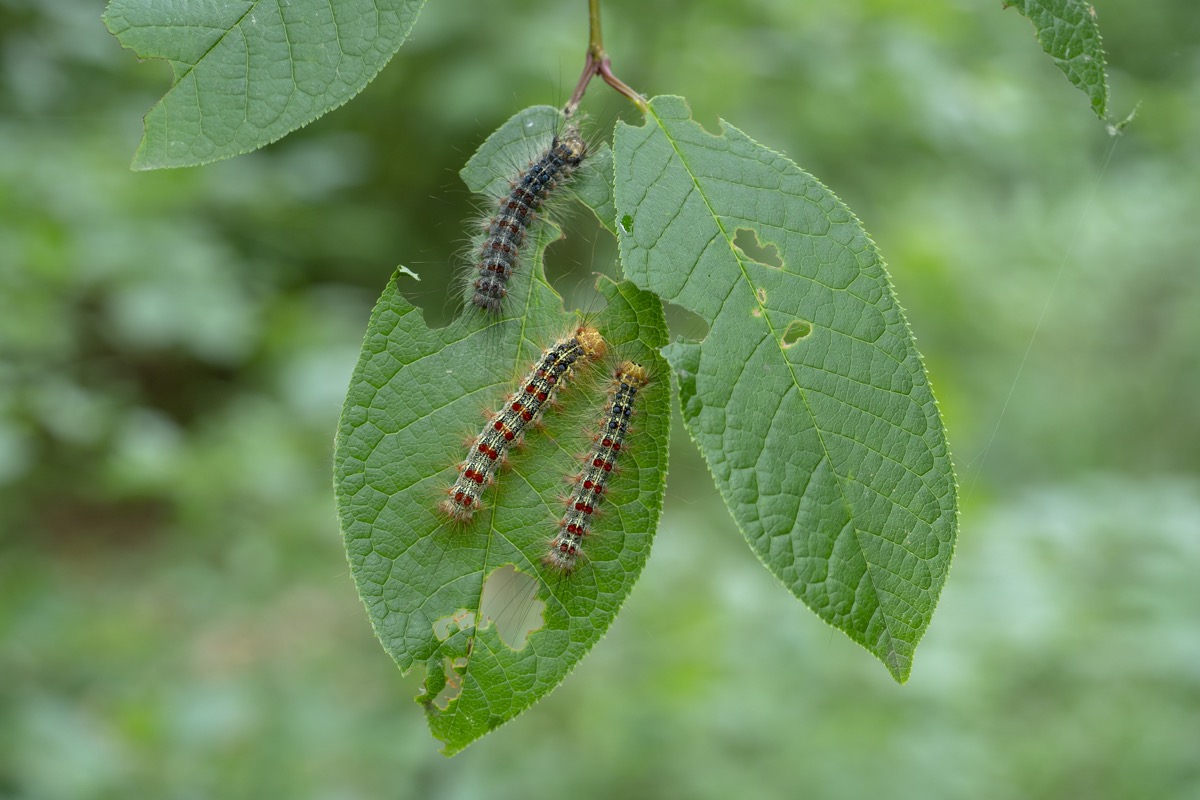If You See This Bug, Never Touch It Without Gloves & a Mask, Experts Warn
You should never touch it with your bare hands.

As kids, many of us grew up playing outside with no fear, touching all kinds of different bugs and insects, no matter how big or slimy they were. While most of us have grown up to become a little more fearful of creepy, crawly things, others are still not afraid to pick up a stray bug here or there, especially in an effort to shoo it away. But you'll need to exercise a bit of caution when it comes to one pervasive insect in particular. Experts are sounding the alarm about a tiny bug that you should never pick up with your bare hands because it could harm you. Read on to find out what kind of insect experts say you should only be touching if you're covered up with gloves, a mask, and long-sleeved clothing.
RELATED: If You Live in These States, Report This Bug to Local Officials.
The U.S. is experiencing one of the worst gypsy moth outbreaks in recent years.

Margaret Skinner, PhD, an entomologist and researcher with the University of Vermont and its extension program, recently told CNN that the U.S. typically sees outbreaks of gypsy moth caterpillars every six to eight years—but experts say we're seeing one of the worst outbreaks in recent history this year.
Kathy Decker, the manager of the Vermont Department of Forests, Parks and Recreation's forest protection program, told the outlet that the COVID pandemic aided the country's gypsy moth outbreak, as it stopped the department's aerial forest inspections due to social distancing regulations, which prevented authorities from catching the outbreak until it was too far along. The U.S. Department of Agriculture (USDA) says gypsy moth caterpillars are "are among America's most destructive, non-native invasive insect pests." and "early detection is critical" to limiting its spread.
RELATED: 5 Things You're Buying That Bring Bed Bugs Into Your House, Experts Say.
Never touch a gypsy moth caterpillar with your bare hands, experts say.

Gypsy moth caterpillars can also cause respiratory ailments and skin rashes in people who come across them. Rashes from these insects are typically contracted through direct contact with the tiny hairs on these caterpillars, also known as setae, which can also "be found in soil, tree bark, and silk cocoons," the Massachusetts' Reliant Medical Group explains. As a result, Skinner told CNN that you should be wearing gloves, a mask, and long-sleeved clothing when dealing with these bugs, even when just removing caterpillar eggs.
The gypsy moth caterpillar's egg masses appear to be covered with yellowish hair, while newly hatched caterpillars are black and hairy, per Michigan State University. During the later stages, the caterpillars develop a yellow to gray coloring with bristle-like hairs and five pairs of blue dots and six pairs of red dots on their backs. As moths, the males are brown with a darker brown pattern on their wings and females are nearly white with dark sawtooth patterns on their wings.
If you experience severe symptoms after coming in contact with a gypsy moth caterpillar, call your doctor.

There are several different symptoms you may experience after coming in contact with a gypsy moth or gypsy moth caterpillar. According to the Reliant Medical Group, this includes mild to moderate stinging or pain accompanied by "welts, small, fluid-filled sacs, raised red bumps, and patches of red scaly skin." These symptoms can appear within minutes or hours after contact and last for several days. However, if the setae makes contact with any mucous membranes, you may experience more severe respiratory symptoms like shortness of breath, conjunctivitis, difficulty swallowing, and hay fever.
"Try to remove the hairs as best you can and treat with pain relievers as needed," Reliant Medical Group pediatrician Stacey Maslow, MD, said in a statement. "If any of the more serious side effects start to occur, like shortness of breath, contact your doctor."
RELATED: For more up-to-date information, sign up for our daily newsletter.
The gypsy moth outbreak is concentrated in certain states.

According to the USDA, gypsy moths and gypsy moth caterpillars are currently found in more than 20 states: Connecticut, Delaware, Illinois, Indiana, Kentucky, Maine, Maryland, Massachusetts, Michigan, Minnesota, New Hampshire, New Jersey, New York, North Carolina, Ohio, Pennsylvania, Rhode Island, Vermont, Virginia, West Virginia and Wisconsin, but the threat is "considered particularly high risk in Kentucky," per the organization.
The gypsy moth caterpillar can typically be found feeding on the foliage of more than 300 different trees and shrubs, including Aspen, Birch, Cedar, and Oak trees. Trees whose leaves have been eaten may be a sign of nearby gypsy moth caterpillars, per the USDA.
RELATED: If You See This Bug in Your Home, Don't Step on It, Experts Warn.





















